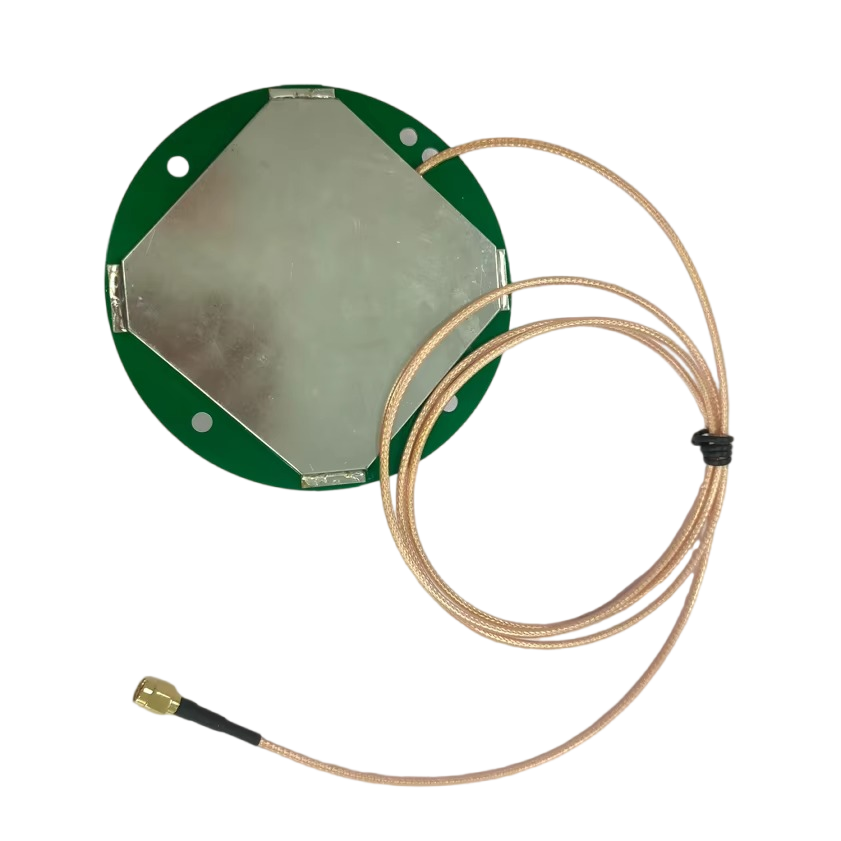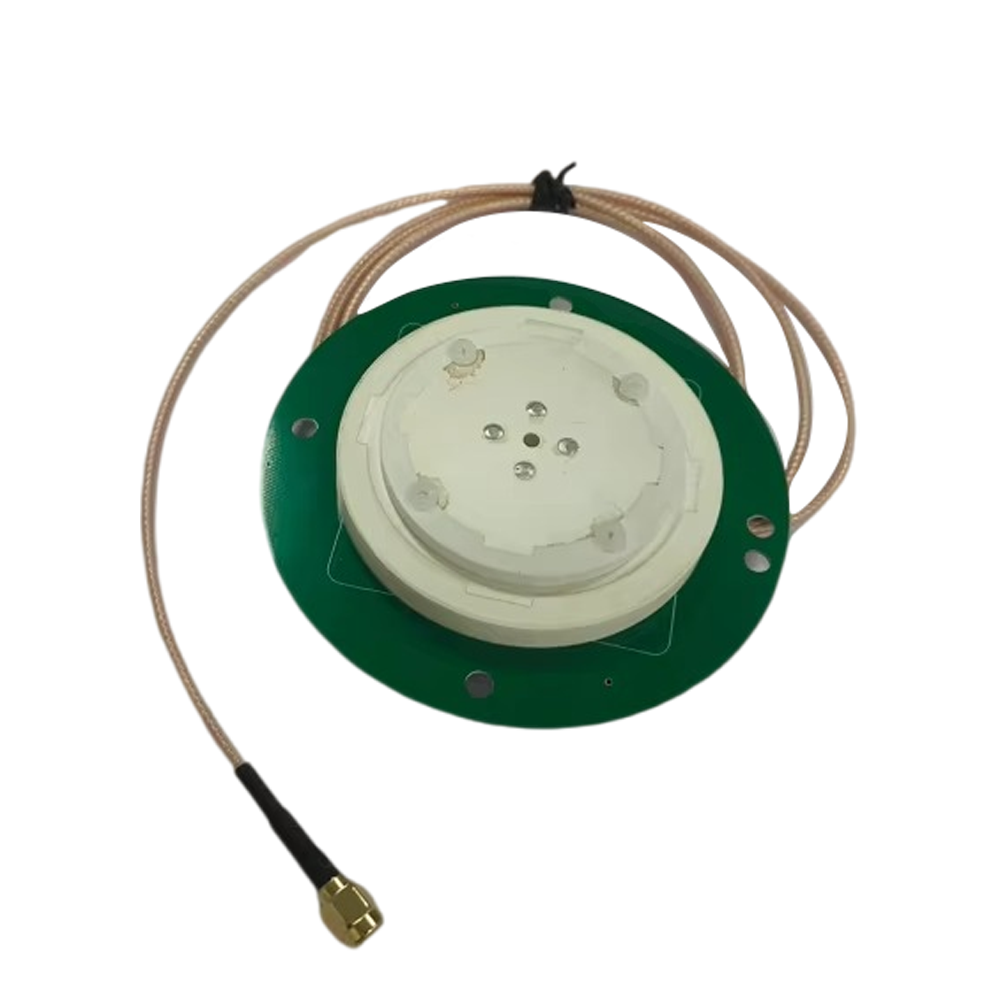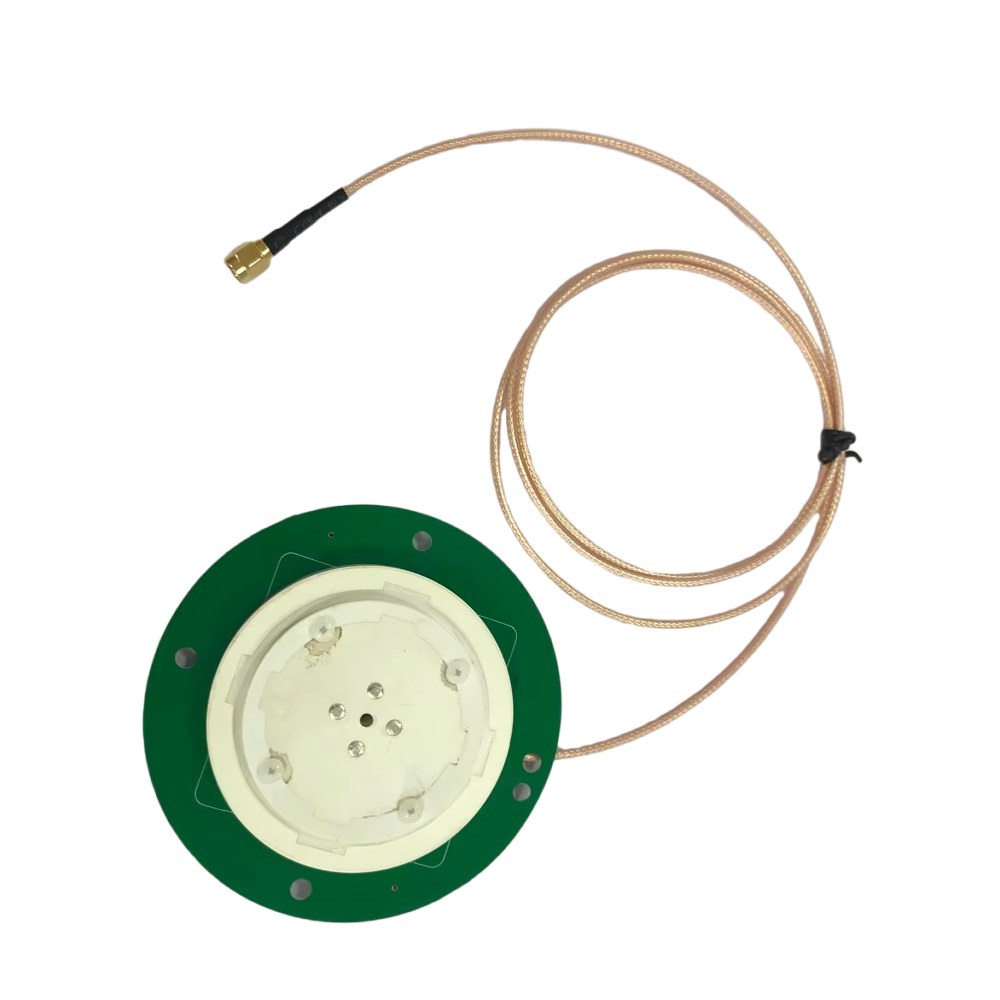The term “Multi-Band RTK Car Antenna” encapsulates two key concepts: multi-band functionality and Real-Time Kinematic (RTK) technology. Multi-band refers to the antenna’s ability to operate across multiple frequency ranges, including GNSS (Global Navigation Satellite System), LTE (Long-Term Evolution), and WIFI/BT (Wireless Fidelity/Bluetooth). RTK, on the other hand, is a satellite navigation technique that enhances the precision of position data by using a fixed reference station to correct errors in real time. When combined, these features create an antenna that can provide highly accurate positioning while maintaining seamless connectivity across various networks.
In the context of modern vehicles, this technology is transformative. Traditional GPS antennas can provide positioning accuracy within a few meters, which is sufficient for basic navigation but inadequate for advanced applications like autonomous driving, precision agriculture, or fleet management. The Multi-Band RTK Car Antenna, however, leverages multiple GNSS frequencies (such as GPS L1, BeiDou B1, and others) to mitigate errors caused by atmospheric interference, signal blockage, and satellite clock inaccuracies. When paired with RTK correction data, which is transmitted via 4G or WIFI, the antenna can achieve positioning accuracy of 1-2 centimeters, making it indispensable for applications where precision is critical.
Moreover, the integration of 4G and WIFI capabilities ensures that the antenna is not just a navigation tool but a versatile communication hub. This allows vehicles to stay connected to cloud-based platforms, enabling real-time data transmission, over-the-air updates, and remote monitoring. For fleet operators, this means improved route optimization, better fuel efficiency, and enhanced driver safety. For autonomous vehicles, it means the ability to make split-second decisions based on accurate, up-to-the-millisecond positioning data.
The performance of the Multi-Band RTK Car Antenna is defined by a set of technical specifications that work in harmony to deliver superior results. Let’s break down these specifications and explore their significance:
Gain: 28 dBi
Gain is a measure of an antenna’s ability to focus its radiation pattern in a specific direction, expressed in decibels relative to an isotropic radiator (dBi). A gain of 28 dBi is exceptionally high for a car antenna, indicating that the device is highly efficient at capturing weak signals and amplifying them. This is crucial for maintaining connectivity in challenging environments, such as urban canyons (where buildings block satellite signals) or remote areas with limited network coverage.
High gain ensures that the antenna can receive GNSS signals even when they are attenuated by obstacles, and it enhances the strength of 4G and WIFI signals, reducing dropouts and improving data transfer rates. For RTK applications, this is particularly important because the correction data transmitted via 4G or WIFI must be received without delay to maintain centimeter-level accuracy.
Impedance: 50 Ohms
Impedance is the resistance of an antenna to the flow of alternating current (AC), measured in ohms. A standard impedance of 50 ohms is widely adopted in RF (radio frequency) systems, including those used in automotive applications. This ensures compatibility with most transceivers, modems, and other RF components commonly found in vehicles.
Matching the impedance of the antenna to the connected equipment minimizes signal reflection, which can cause signal loss and degradation. By maintaining a 50-ohm impedance, the Multi-Band RTK Car Antenna ensures that the maximum amount of signal power is transferred between the antenna and the receiver, optimizing performance and reducing interference.
Standing Wave Ratio (SWR)
The standing wave ratio is a measure of how well the antenna is matched to the transmission line, with a lower SWR indicating a better match. The specifications for this antenna are as follows:
GNSS ACTIVE: 283 (Note: This value appears to be a typo; typical SWR values for GNSS antennas range from 1.5:1 to 2:1. A corrected value might be 1.8:1, which is excellent for GNSS applications.)
LTE AVERAGE: -2 (This is likely a typo; SWR cannot be negative. A typical value for LTE antennas is around 2:1.)
WIFI/BT: -2 (Similarly, this is likely a typo, with a typical value of 2:1.)
Assuming corrected values, a low SWR across all bands ensures efficient signal transfer, minimizing power loss and maximizing the antenna’s performance. For GNSS, a low SWR is critical because weak satellite signals must be captured and amplified effectively. For LTE and WIFI, it ensures that data can be transmitted and received at high speeds without interference.
Axial Ratio: GNSS ≤ 4, GSM: NA, WIFI/BT: NA
Axial ratio is a measure of how well an antenna maintains circular polarization, expressed as the ratio of the major to minor axes of the polarization ellipse. For GNSS signals, which are circularly polarized, a low axial ratio (≤ 4) is essential. This indicates that the antenna can efficiently receive circularly polarized signals, which is crucial because satellite signals become elliptically polarized as they pass through the atmosphere.
A high axial ratio would cause significant signal loss, reducing the antenna’s ability to receive GNSS signals accurately. By maintaining an axial ratio of ≤ 4 for GNSS, the antenna ensures that it can capture these signals with minimal loss, even in adverse conditions. GSM, WIFI, and BT signals are linearly polarized, so axial ratio is not applicable (NA) for these bands.
Interface Type: FAKRA/SMA, Support Customization
The interface type determines how the antenna connects to the vehicle’s electronics. FAKRA (Fachkreis Automobil) connectors are standard in automotive applications, designed to withstand the harsh conditions of vehicle environments (vibration, temperature extremes, etc.). SMA (SubMiniature version A) connectors are widely used in RF applications, offering a reliable connection for high-frequency signals.
The ability to support both FAKRA and SMA connectors, along with customization options, makes the antenna versatile and compatible with a wide range of vehicles and equipment. This flexibility is essential for manufacturers and integrators, as it allows them to adapt the antenna to specific vehicle models or use cases without significant modifications.
Frequency Bands
The antenna operates across multiple frequency bands, enabling it to support various navigation and communication protocols:
GNSS: 1575.42 MHz (GPS L1), 1.023 MHz (likely a typo, possibly BeiDou B1 at 1561.098 MHz)
LTE: 824~960 MHz (LTE bands 5, 8), 1710~2690 MHz (LTE bands 1, 2, 3, 4, etc.)
WIFI/BT: Not explicitly listed, but typically 2.4 GHz and 5 GHz for WIFI, 2.4 GHz for BT
By covering these bands, the antenna can support GPS, BeiDou, and other GNSS systems, ensuring global coverage. The LTE bands include both low-frequency (824~960 MHz) and high-frequency (1710~2690 MHz) ranges, providing wide-area coverage (low frequencies travel farther) and high data rates (high frequencies support more bandwidth). WIFI and BT bands enable local connectivity, allowing the antenna to communicate with in-vehicle systems or nearby devices.
Polarization Type: GNSS: RHCP, LTE: LP, WIFI/BT: LP
Polarization refers to the orientation of the electric field of a radio wave. GNSS signals use Right-Hand Circular Polarization (RHCP), which is why the antenna is designed with RHCP for GNSS. This ensures optimal reception of satellite signals, as RHCP antennas can receive signals that have been depolarized by the atmosphere or reflections.
LTE, WIFI, and BT signals use Linear Polarization (LP), which can be vertical or horizontal. The antenna’s LP design for these bands ensures compatibility with the linearly polarized signals used by cellular networks, WIFI routers, and Bluetooth devices.
Temperature Range: -40~+85°C (Storage and Operation)
Vehicles operate in a wide range of environmental conditions, from freezing winters to scorching summers. The antenna’s ability to function reliably in temperatures ranging from -40°C to +85°C is a testament to its rugged design. This wide temperature range ensures that the antenna can perform in extreme climates, making it suitable for use in vehicles across the globe, from the Arctic to the Sahara.
The storage temperature range is the same as the operating range, indicating that the antenna can be stored in harsh conditions without degradation, which is important for logistics and inventory management.
The Multi-Band RTK Car Antenna is not just a collection of technical specifications; it is a product of careful design and engineering that balances performance with practicality. Automotive antennas must be compact, durable, and aesthetically pleasing, as they are often mounted on the roof, hood, or trunk of a vehicle.
One of the key design challenges is integrating multiple bands into a single antenna without causing interference between them. Engineers achieve this by using advanced filtering techniques and separate radiating elements for each band. For example, the GNSS radiating element is designed to be highly sensitive to 1575.42 MHz signals, while the LTE and WIFI elements are tuned to their respective frequency ranges. Filters are used to prevent signals from one band from leaking into another, ensuring that each band operates independently and efficiently.
The antenna’s housing is another critical design consideration. It must protect the internal components from moisture, dust, vibration, and impact, all while minimizing signal attenuation. Manufacturers use materials like UV-resistant plastic or fiberglass, which are lightweight, durable, and transparent to radio waves. The housing is also designed to reduce wind noise and aerodynamic drag, ensuring that it does not affect the vehicle’s performance or fuel efficiency.
Mounting options are also varied, with adhesive mounts, magnetic mounts, and bolt-on mounts available to suit different vehicle types. The choice of mount depends on factors like the vehicle’s surface material, the desired positioning (for optimal signal reception), and the need for a permanent or temporary installation.
Another important design feature is the antenna’s ground plane. A ground plane is a conductive surface that enhances the antenna’s radiation pattern and efficiency. In automotive applications, the vehicle’s metal body often serves as the ground plane, but for non-metallic vehicles (such as those with composite bodies), the antenna may include an integrated ground plane to ensure optimal performance.
Performance Advantages: Why This Antenna Stands Out
The Multi-Band RTK Car Antenna offers several performance advantages that set it apart from traditional antennas:
Unmatched Positioning Accuracy
Thanks to its multi-band GNSS support and RTK capability, the antenna delivers centimeter-level positioning accuracy. This is a game-changer for applications like autonomous driving, where even a small error can have catastrophic consequences. For example, an autonomous vehicle navigating a narrow city street needs to know its position within a few centimeters to avoid collisions with pedestrians, cyclists, or other vehicles. Similarly, in precision agriculture, a vehicle equipped with this antenna can apply fertilizers or pesticides with pinpoint accuracy, reducing waste and improving crop yields.
Seamless Connectivity
The integration of 4G and WIFI ensures that the antenna remains connected even in areas with spotty network coverage. The high gain (28 dBi) allows it to pick up weak signals, while the wide frequency range supports multiple cellular bands, ensuring compatibility with networks around the world. This seamless connectivity is essential for real-time data transmission, which is critical for applications like fleet management, where managers need to track vehicles in real time and receive alerts about driver behavior or vehicle issues.
Robustness and Reliability
The antenna’s ability to operate in extreme temperatures (-40~+85°C) and its rugged design make it highly reliable in harsh environments. Whether it’s raining, snowing, or scorching hot, the antenna continues to perform, ensuring that navigation and communication are never compromised. This reliability is particularly important for commercial vehicles, which often operate in challenging conditions and cannot afford downtime due to equipment failure.
Versatility and Customization
With support for FAKRA and SMA connectors, and the ability to customize interfaces, the antenna can be integrated into a wide range of vehicles and systems. This versatility makes it an ideal choice for manufacturers, integrators, and end-users who need a solution that can adapt to their specific requirements. Whether it’s a passenger car, a truck, a agricultural vehicle, or a drone, the antenna can be tailored to fit.
Low Interference
Advanced filtering and design techniques minimize interference between bands, ensuring that each frequency range operates independently. This reduces signal degradation and ensures that GNSS, LTE, and WIFI signals are received and transmitted with minimal noise. For RTK applications, this is crucial because interference can corrupt the correction data, leading to reduced positioning accuracy.




































































 Language
Language
 En
En Cn
Cn Korean
Korean

 Home >
Home > 







 18665803017 (Macro)
18665803017 (Macro)













